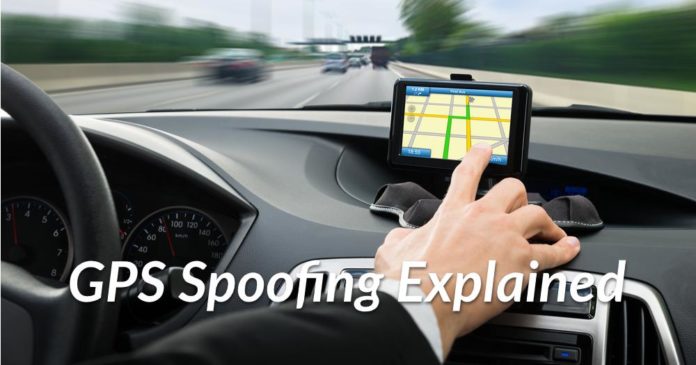
You may have heard stories of people’s GPS units or smartphones suddenly going crazy. Such events usually have little to do with the satellites providing the GPS signal and/or apps using that signal. Rather, said individual may have fallen victim to GPS spoofing. This can further mess up the date and time of GPS-enabled devices, making the situation that much worse.
In this article, we want to explain what GPS spoofing is and how, if anything, you can (or should) do about it. Let’s get started…
How GPS spoofing works
GPS spoofing is an attack that aims to override a GPS-enabled device’s original location. In order to make this happen, the attacker uses a radio transmitter that broadcasts a fake GPS signal and interferes with GPS receivers nearby. As a result, the affected devices display fake GPS locations.
The situation is different with smartphones, with ready-to-download apps fooling other apps into thinking that the device isn’t at its original location. The problem, however, is that GPS is also used to determine your local date and time, and as a result – your phone may start showing that you have traveled to the future or back in time.
GPS spoofing used to be very expensive, and was mostly used in warfare to fake ships’, airplanes’ and vehicles’ locations to confuse the enemy. While it still may be used for this purpose, GPS spoofing is now more accessible to ordinary hackers. Today they need a portable radio signal transmitter with open-source software, which can be bought for under $300.
Why this happens?
GPS uses satellites orbiting the Earth to find each user’s location. Said satellites continuously transmit radio signals that GPS-enabled devices use to triangulate your location.
The problem is that these signals become fairly weak until they reach your device, leaving room for GPS spoofing which tends to be operated from the ground — thus, its fake signals tend to be stronger. And since any GPS device could be affected, this could be a major problem in some cases. Which brings us to the next section…
4 bad use cases of GPS spoofing
Warfare
As we’ve mentioned above, GPS spoofing can change the perceived location of ships, planes, and other vehicles. As a result, a pilot could think there’s another aircraft approaching them when there isn’t.
Taxi
Taxi drivers can use GPS spoofing to fake or disguise their location to earn more money. Similarly, GPS spoofing could be used for criminal activities.
Geofencing
Related to the previous point — since GPS systems are used to track delivery drivers and deliveries, they can include geofencing systems that lock the truck until it reaches its destination. It is easy to imagine malicious actors spoofing the truck’s location to steal its cargo.
Construction
Some construction machinery is controlled using GPS; and obviously, GPS spoofing can have fatal effects on the construction process. Just imagine a ton of bricks being dumped in the wrong place…
Apps
GPS spoofing can actually help regular users in certain instances, like when they’re playing some location-aware games. Think: Pokemon Go, with a single location and an app that lets you “cover” the entire world. The problem is that GPS spoofing apps will make all your apps think you are somewhere else.
How to protect yourself from GPS spoofing?
While anti-GPS spoofing technology is being developed as we speak, it may not be available — or even necessary — for the average user. If you, however, run a business – there are a few things you could do to protect yourself.
First, you may want to have a backup system ready with rubidium or cesium clocks to use it if you notice a sudden change in GPS coordinates and time, until the original connection is restored.
Another thing that could be done is to obscure your building’s antennas if you need to track drivers, deliveries, planes or ships from an office building. This will protect it (the building) from receiving fake signals.
Finally, there are advanced techniques that could be developed and that would rely on artificial intelligence and machine learning to distinguish between fake and real signals. This part, however, requires a serious effort which may only be justified by and (cash-wise) acceptable to large corporations. It is also beyond the scope of this article. 😉
